2 position home signals (cont.)
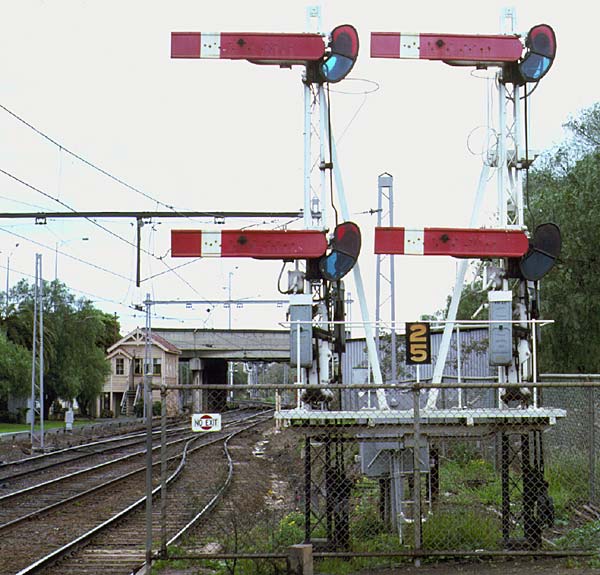 |
|||||||||||||
| A very important concept about 2 position signals is that they are always read:
"TOP TO BOTTOM, LEFT TO RIGHT" Let's look at this. Post 25 at Clifton Hill had 2 dolls and of course each doll applied from a different track. The left hand doll applied from the centre track (track 1A) The right hand doll applied from the right hand track ( track 1) As shown on the signal diagram below Clifton is a junction station so the signals had to take a train to either the Resevoir line (left hand track) or to the Heidleberg line (right hand track) Looking at the two dolls seperately, we know that the left hand doll only applies from the centre track,
So "top to bottom, left to right" is being applied, top arm to left track, bottom arm to right track. The right doll is identical except that it applies from the right hand track |
|||||||||||||
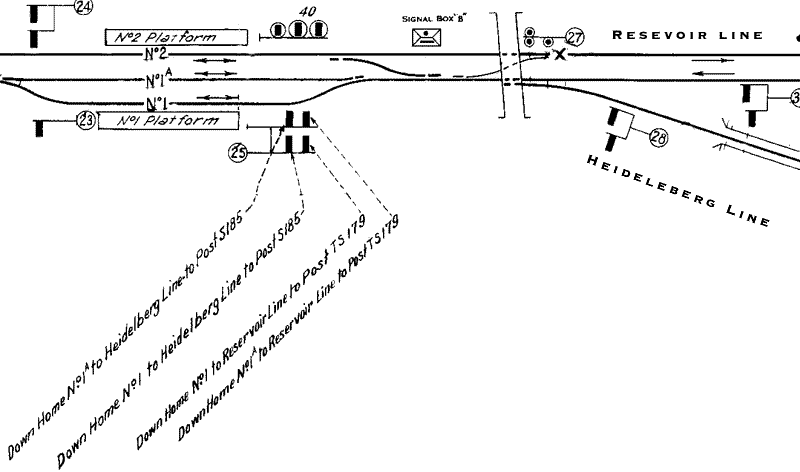 |
|||||||||||||
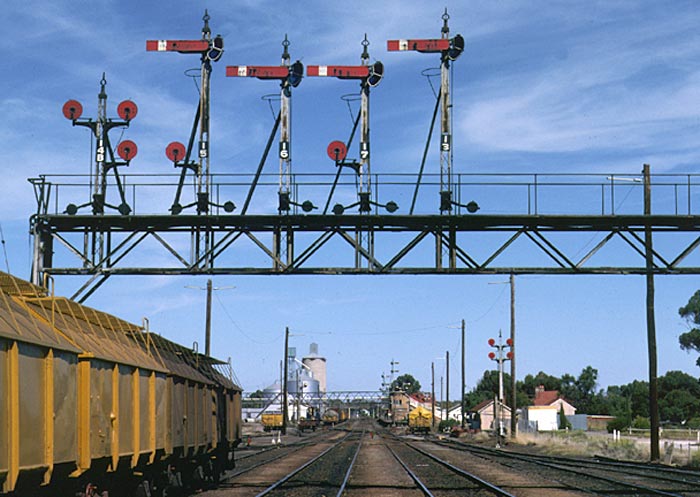 |
|||||||||||||
| This signal gantry at Dimboola was an interesting one and we should take a look at it.
I was standing between the two main tracks to take this photo. The track on my right is the Serviceton mainline, the track on my left is the Jeparit line. The other tracks are yard sidings. Basically, what we have here is two seperate "home arrivals" (note the unequal heights) for two mainlines all placed on one signal bridge. The two right hand signals (posts 17 & 18) apply from the Serviceton line. Because No.1 track is the straight track from the Serviceton line its signal is higher than the signal next to it. Post 17 applies from the same Serviceton track but the track it takes you to is the diverging route so the blade is lower just like the home arrival at Parwan. The two left hand home signals apply from the Jeparit track and the situation is reversed, from the Jeparit track No.1 track is a diverging route so its blade (post 16) is lower, post 15 applies from the Jeparit track to No.2 track which is a straight route so its home signal is higher. |
|||||||||||||
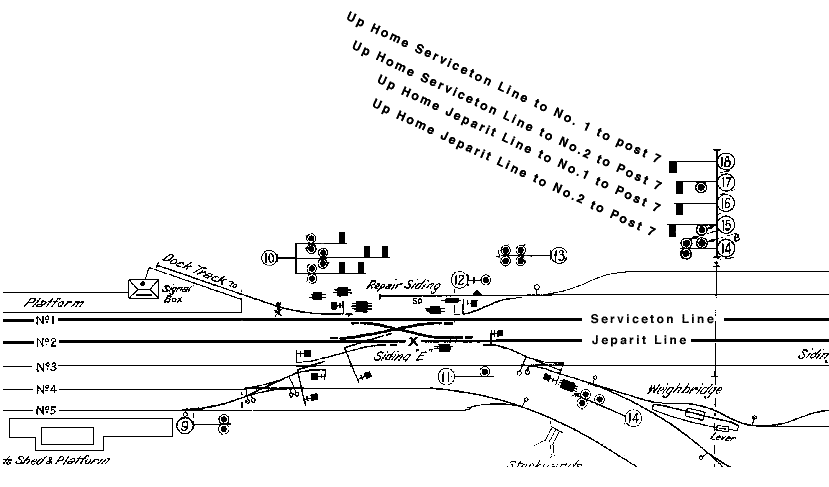 |
|||||||||||||
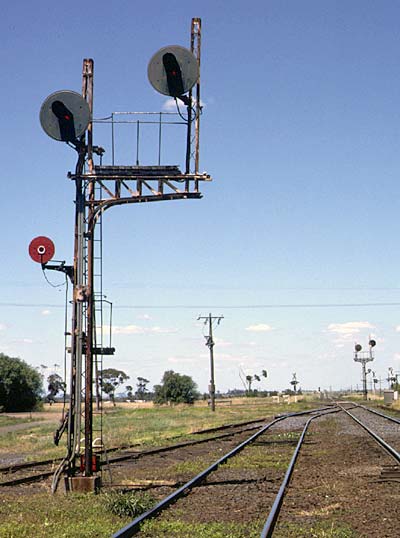 |
|||||||||||||
| This is the up "home departure" at Rockbank. Like almost every 2 position signal, home signals can display their aspects by lights only.
On the previous page I said that home departures "were almost always the same height " very few exceptions existed but Rockbank was one of them. Many semaphore home signals were converted to light signals when a nearby level crossing got flashing lights or boom gates installed as in this case. |
|||||||||||||
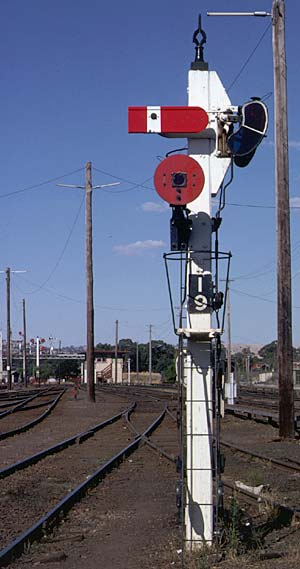 |
|||||||||||||
| A very unique 2 position home signal was this one at Seymour. Due to clearence reasons a normal length home signal blade could not be used so this "calling on" blade was used. | |||||||||||||
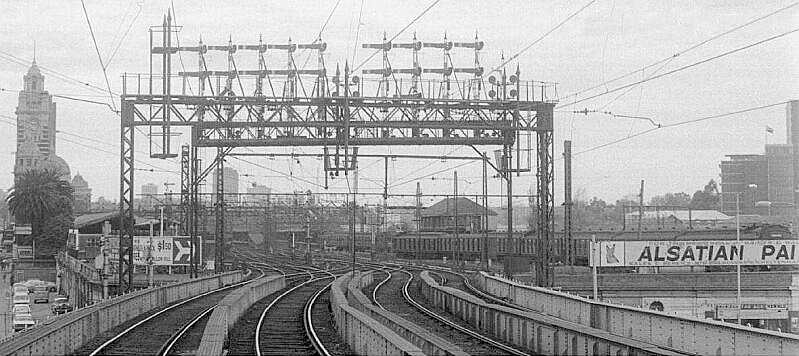
| ABOVE & BELOW:The famous "Bridge No. 1" at Flinders St controling movements from the viaduct from Spencer St into the west end of the station. At the time the viaduct tracks were not bi-directional like they are today. The 10 home signals on the left applied from the "north viaduct line" and the 8 home signals on the right applied from the "south viaduct line" Both photos courtesy Peter J. Vincent |
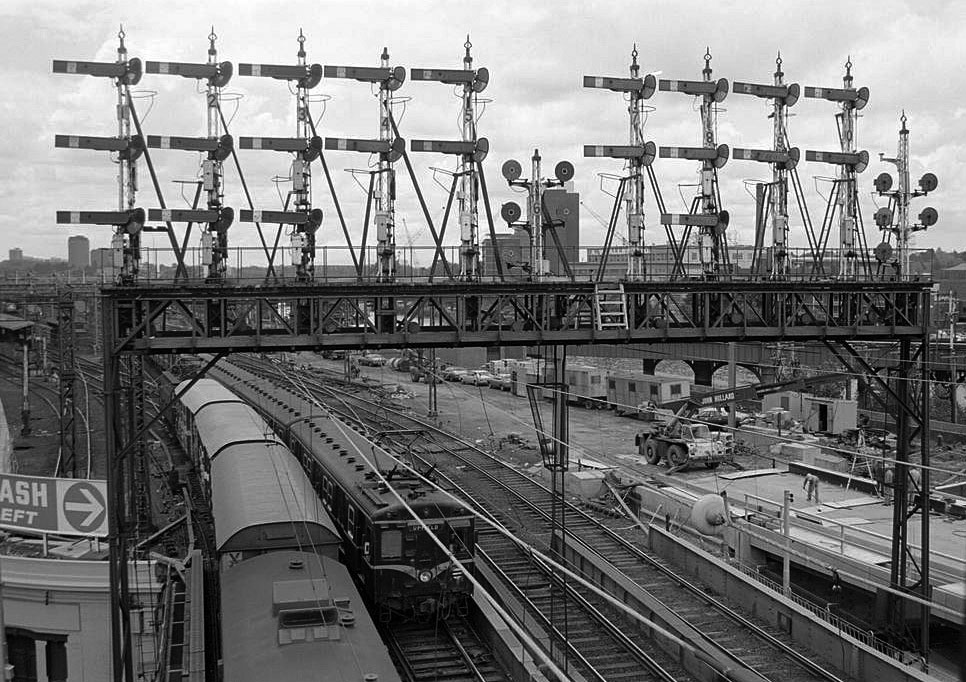
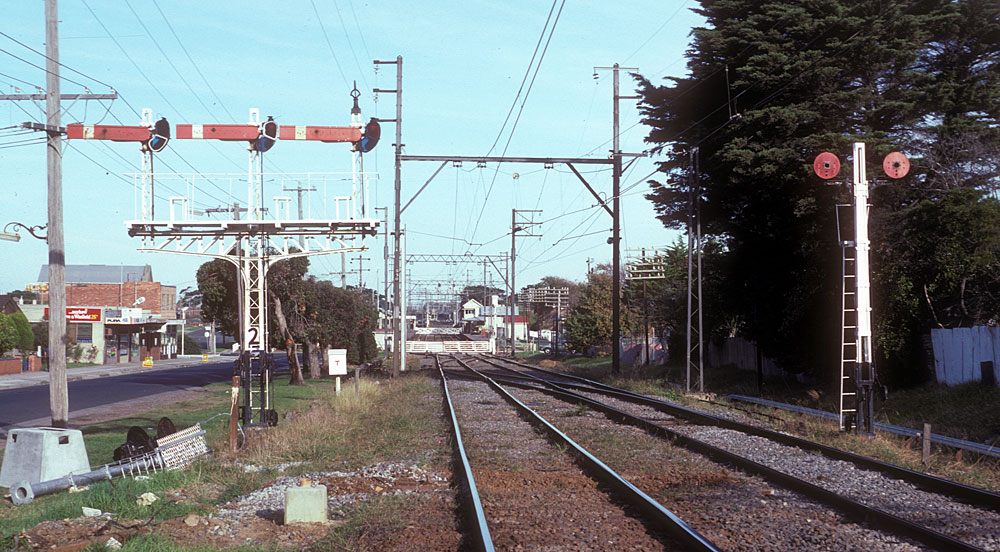
| Mordialloc, down home arrivals. May 1985. This signal could take you to 3 tracks hence the 3 homes side by side. Theoretically the middle home could have been higher as that was for the straight track, the other two signals required a diverging move. The two discs on the right were set back discs from the up line. CLICK HERE for a signal diagram |
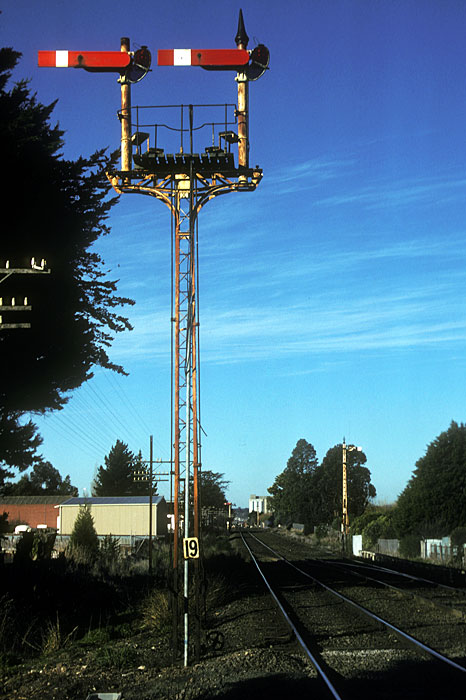 |
Post 19 at Linton Junction. The left hand home applied from the Ararat line (track on the left) to the starting signal seen in the distance. The right hand home applied from the Linton line (track on the right) through the crossover to the starting signal. |
BELOW: Oakleigh, down home arrivals and setback discs from the up line.
Remember, "top to bottom, left to right" Both the home and disc signals are in accordance with the "rule"
Like most home arrival signal posts, doll containing the straight road signals are higher than the signals applying for the diverging move.
Photo courtesy Rod Williams, circa 1972
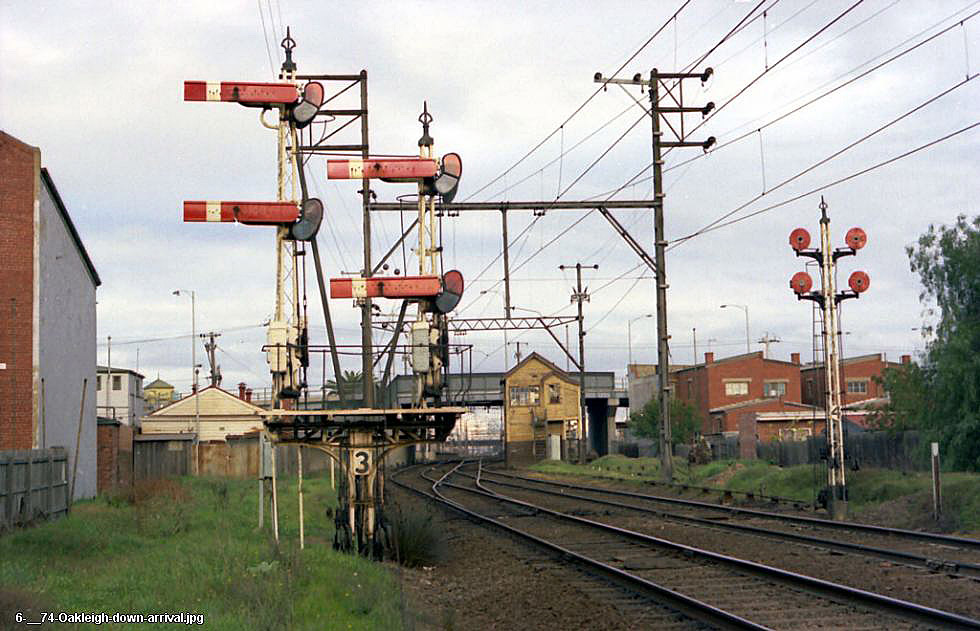
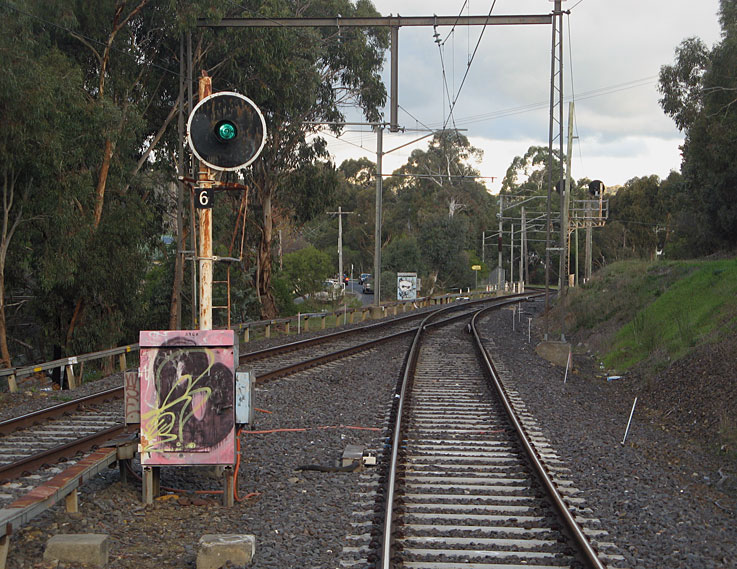
2 position light home signal at Greensborough. May 2010.